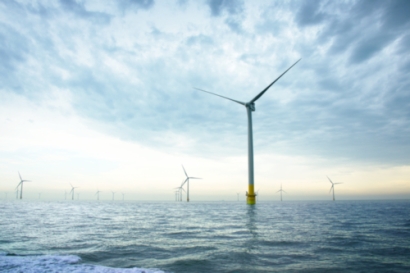
The lion’s share of these activities, however, doesn’t go beyond paper. And the problem is that their implementation will cost a lot. The recent reports by McKinsey suggests that the price for getting to net zero by 2050 is around $3.5 trillion a year. The biggest burden is to be laid on the shoulders of the sectors that either emit big volumes of greenhouse gases or sell products emitting them. But other industries, including renewables, will also have to rise to the challenge.
Digitization can be part of the solution. But with the absence of compensating mechanisms or governmental policies that can alleviate the digital transformation, there is little decisive action on the end of the businesses because they don’t see what is in it for them. Yet, if implemented properly, digital strategies can be beneficial not only for the public good but also for the company’s profit.
Some companies go digital slowly, if at all, because there is a belief that only a global strategy can deliver perceptible results. That initiatives by companies alone are not enough. There should be coordinated action by governments, businesses, and enabling institutions as well as roadmaps towards traceable goals and practically implementable ways of technology adoption. Compliance needs to be developed on the governmental levels and enforced by the corresponding bodies.
While it’s true that the joint effort will deliver the most qualitative shifts, renewable businesses need to start testing and implementing automation tools. Centralized systems need to replace geographically dispersed sources of energy data and eliminate insights isolation. Industry players need to be able to make more informed decisions using real-time reports. AI-generated forecasts should be used to optimize distribution of energy, and fit in the supply chain and comply with demand.
Putting these tools into practice requires time, the more the bigger the organization. But the earlier you start, the more you’ll be prepared when the corresponding decisions by policymakers finally arrive.
Aside from the somewhat postoped benefit of compliance with international net-zero acts, which will be enforced sooner or later, digitization can bring earlier ROI. Software, mobile apps and cloud platforms have been helping renewable energy with project management, maintenance, quality inspections, field data collection, and more.
As an example, if you’re an offshore wind farm that uses a mobile app for field inspections, you can save up to 45% of time on daily report filing. Your office pre-fills checklists and pushes them to the technicians’ devices. Technicians fill them in and send back for approval and signature. They don’t travel to the main office. Project managers don’t travel to the wind turbine location. You save time processing and transporting paper documents. The inspection that otherwise can extend into weeks takes one day with the help of automation software for renewable project management and inspections.
Add to that bidding software, automated procurement, logistics, and billing, alerts based on predictive maintenance, AI-generated forecast of the weather, digital twins, smart energy grids, and your performance will double. You save man hours and money, reduce human error, process operations faster, and standardize most of your processes, which is crucial for safety-critical environments. You detect safety issues and prevent accidents. Less accidents means less insurance claims, fees, repair work, project delays and eventually higher performance.
And we’ll need this high performance. The global renewable power generation demand is expected to reach 12,630.9 TWh by 2027, based on the forecast by Grand View Research, Inc. The economic slowdown and growing energy crisis partially caused by the war in Ukraine has brought the focus to the need for increased sustainable power generation. In the upcoming years, the world is going to depend more on renewable energy, and companies that can deliver it in volumes will be winning competition.
Aside from bringing competitive advantages, digitization drives sustainability, a huge mainstream trend, which isn’t going anywhere. It’s hard to find a place on Earth today that hasn’t been hit by climate disasters. Drought in Somalia, heavy monsoon rains in India and Bangladesh, Yellowstone’s floods, a record-setting heat wave across the U.S. Midwest: our news feeds are full of all kinds of extreme weather events. The climate crisis is at our doorsteps, and many blame the energy sector for its arrival way earlier than expected.
Renewables stand aside from fossil fuels, and as a source of energy, wind, solar and ocean are considered sustainable. However, maintenance of, say, wind farms can be improved using sensors, drone-based imagery, de-icing systems, weather modeling, and other digital products.
Siemens Gamesa issued a case study showing how they monitor over 10,000 remotely connected wind turbines around the world. Every turbine is equipped with 300 sensors that transmit data to the central Diagnostic Center. The center’s team and the wind farm’s site management have access to this data, which helps them detect irregularities before they cause any damage. The company also uses digital twins and neural networks for remote diagnostics and early failure prediction.
For on-site checks, Siemens Gamesa’s technicians use digital reports supported by pictures or videos taken with a smartphone or tablet. These reports are transferred to the onshore office, where the engineering team analyzes the photographic documentation and detects the potential damage before it has any impact on critical turbine parts.
Such a combo of digital solutions helps the company remain a leading wind turbine service provider and sustainability pioneer, setting an example for the rest. The future of renewables is definitely digital-based. The end results of the transformation look distant and unknown until you set a strategic approach and start automating your processes one at a time. It will pay off.
About the Author: Iuliia Nesterenko works in Content & Social Media for Fluix.

